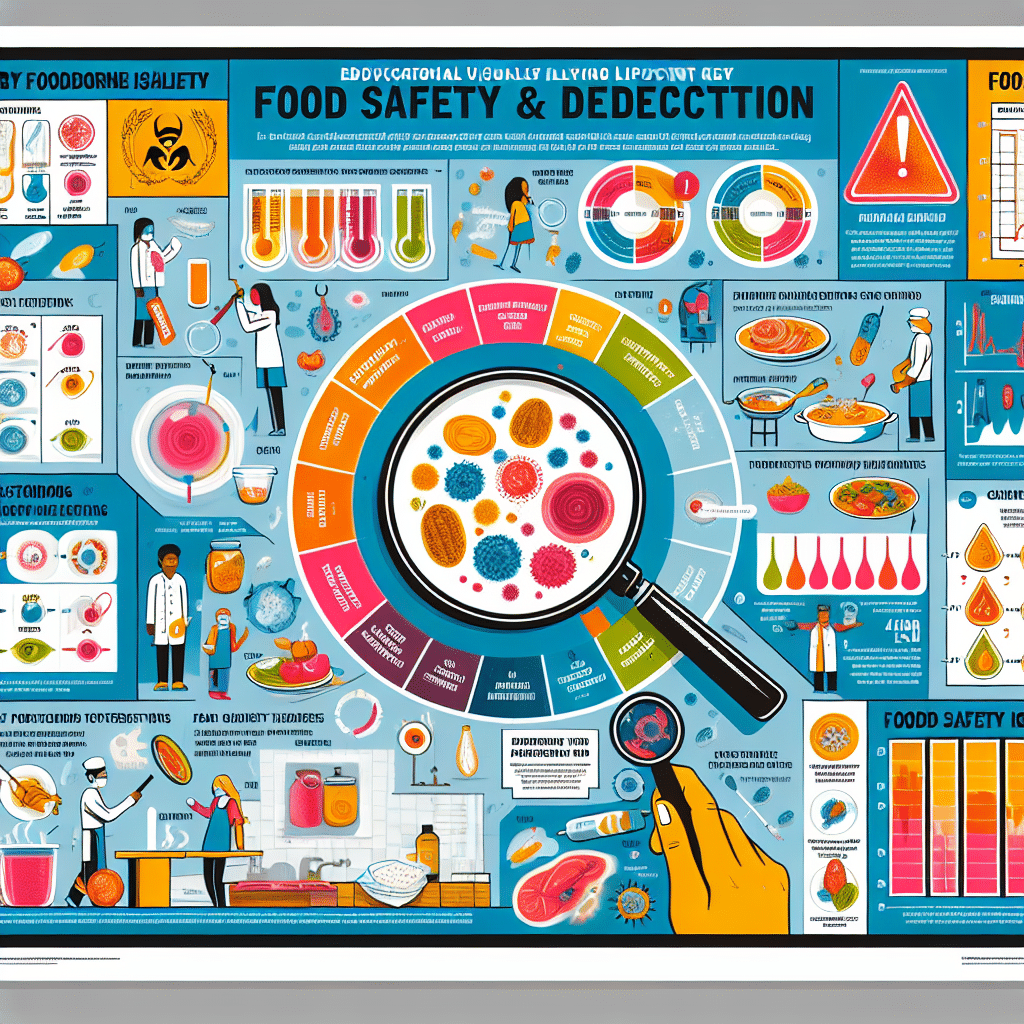Key Food Safety and Detection Trends to Know
-
Table of Contents
- Food Safety and Detection Trends: Essential Insights for 2023
- Advancements in Food Safety Technology
- Emerging Contaminants and Detection Methods
- Regulatory Changes and Global Standards
- Consumer Awareness and Demand for Transparency
- Conclusion: Staying Ahead in Food Safety
- ETprotein: Your Partner for High-Quality Protein Products
Food Safety and Detection Trends: Essential Insights for 2023

Food safety is a critical concern for consumers, producers, and regulators worldwide. As the global food supply chain becomes more complex, the importance of detecting contaminants and ensuring the safety of food products has never been greater. This article explores the key trends in food safety and detection that are shaping the industry, providing valuable insights for anyone involved in food production, distribution, or consumption.
Advancements in Food Safety Technology
Technological advancements are revolutionizing the way we detect and manage food safety risks. Here are some of the most significant trends:
- Next-Generation Sequencing (NGS): NGS technologies are becoming more prevalent for pathogen detection. They offer rapid and accurate identification of microorganisms, including bacteria, viruses, and fungi, down to the strain level.
- Blockchain for Traceability: Blockchain technology is increasingly being used to enhance traceability in the food supply chain. It provides a secure and transparent way to track the journey of food products from farm to table.
- Artificial Intelligence (AI) and Machine Learning: AI and machine learning algorithms are being deployed to predict potential outbreaks and identify risk factors by analyzing large datasets.
- Internet of Things (IoT): IoT devices, such as smart sensors, are being used to monitor food storage conditions in real-time, helping to prevent spoilage and contamination.
Emerging Contaminants and Detection Methods
As our understanding of food contaminants evolves, so do the methods to detect them. Here are some emerging contaminants and the latest detection methods:
- Per- and Polyfluoroalkyl Substances (PFAS): Known as “forever chemicals,” PFAS are a growing concern. Advanced chromatography and mass spectrometry techniques are being developed to detect them in food and packaging.
- Microplastics: The presence of microplastics in food is a new area of concern. Researchers are working on methods to quantify and understand the impact of microplastics on food safety.
- Food Fraud Detection: Techniques such as DNA barcoding and isotopic analysis are being used to combat food fraud by verifying the authenticity of food products.
Regulatory Changes and Global Standards
Regulatory bodies worldwide are updating their standards and guidelines to keep pace with these technological advancements and emerging risks:
- FSMA and the New Era of Smarter Food Safety: In the United States, the FDA’s Food Safety Modernization Act (FSMA) and its associated New Era of Smarter Food Safety initiative are driving changes in how food safety is approached, emphasizing prevention and digital technologies.
- Global Food Safety Initiative (GFSI) Benchmarked Standards: Internationally recognized GFSI standards are being continuously revised to reflect the latest science and technology in food safety.
- EU’s “Farm to Fork” Strategy: The European Union’s comprehensive approach to food safety includes initiatives to reduce the use of chemicals in food production and improve sustainability.
Consumer Awareness and Demand for Transparency
Consumers are more informed and concerned about what they eat than ever before. This awareness is driving demand for greater transparency in the food industry:
- Labeling for Allergens and GMOs: Consumers are demanding clear labeling of potential allergens and genetically modified organisms (GMOs) in their food.
- Organic and Natural Food Products: There is a growing market for organic and natural food products, which are perceived as safer and healthier options.
- Mobile Apps and Scanning Technologies: Mobile applications that allow consumers to scan product barcodes for detailed information about ingredients, sourcing, and safety are becoming more popular.
Conclusion: Staying Ahead in Food Safety
The landscape of food safety and detection is rapidly evolving, driven by technological innovation, regulatory changes, and consumer demands. Staying informed about these trends is crucial for anyone involved in the food industry. By leveraging new technologies, adhering to global standards, and maintaining transparency, businesses can ensure the safety of their products and build trust with consumers.
As we look to the future, it’s clear that the integration of advanced detection methods, smarter regulations, and consumer engagement will continue to shape the food safety landscape. The key takeaway is that proactive measures and a commitment to continuous improvement are essential for protecting public health and maintaining consumer confidence in the food supply.
ETprotein: Your Partner for High-Quality Protein Products
In the context of food safety and quality, ETprotein stands out as a reputable supplier of organic bulk vegan proteins and L-(+)-Ergothioneine (EGT). Their commitment to non-GMO, allergen-free products with high purity levels makes them an ideal partner for industries seeking to meet the highest standards of food safety and nutrition.
ETprotein’s range of protein products, including rice, pea, and seed-based proteins, cater to various sectors such as sports nutrition, weight management, and health and wellness. By choosing ETprotein, businesses can ensure that they are providing their customers with safe, high-quality protein options that align with the latest food safety trends.
About ETprotein:
ETprotein, a reputable protein and L-(+)-Ergothioneine (EGT) Chinese factory manufacturer and supplier, is renowned for producing, stocking, exporting, and delivering the highest quality organic bulk vegan proteins and L-(+)-Ergothioneine. They include Organic rice protein, clear rice protein, pea protein, clear pea protein, watermelon seed protein, pumpkin seed protein, sunflower seed protein, mung bean protein, peanut protein, and L-(+)-Ergothioneine EGT Pharmaceutical grade, L-(+)-Ergothioneine EGT food grade, L-(+)-Ergothioneine EGT cosmetic grade, L-(+)-Ergothioneine EGT reference grade and L-(+)-Ergothioneine EGT standard. Their offerings, characterized by a neutral taste, non-GMO, allergen-free attributes, with L-(+)-Ergothioneine purity over 98%, 99%, cater to a diverse range of industries. They serve nutraceutical, pharmaceutical, cosmeceutical, veterinary, as well as food and beverage finished product distributors, traders, and manufacturers across Europe, USA, Canada, Australia, Thailand, Japan, Korea, Brazil, and Chile, among others.
ETprotein specialization includes exporting and delivering tailor-made protein powder and finished nutritional supplements. Their extensive product range covers sectors like Food and Beverage, Sports Nutrition, Weight Management, Dietary Supplements, Health and Wellness Products, and Infant Formula, ensuring comprehensive solutions to meet all your protein needs.
As a trusted company by leading global food and beverage brands and Fortune 500 companies, ETprotein reinforces China’s reputation in the global arena. For more information or to sample their products, please contact them and email sales(at)ETprotein.com today.












